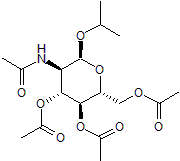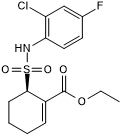Toll-like Receptor Inhibitors: Small Molecules and Peptides
TLRs make up a family of pattern recognition receptors that play important roles in the innate immune response. Broad classes of pathogens (e.g. viruses, bacteria, and fungi) constitutively express a set of mutation-resistant molecules called pathogen-associated molecular patterns (PAMPs). These microbial molecular markers may be composed of proteins, carbohydrates, lipids, nucleic acids and/or combinations thereof. Individual TLRs recognize distinct pathogen-associated PAMPs, initiating signaling cascades that promote the immune response. Structurally, TLRs are type I transmembrane receptors that possess varying numbers of extracellular N-terminal leucine-rich repeat (LRR) motifs, followed by a cysteine-rich region, a TM domain, and an intracellular Toll/IL-1 R (TIR) motif. The TIR motif is common to the larger IL-1 R/TLR superfamily.
5 results for "Toll-like Receptor Inhibitors Small Molecules and Peptides" in Products
5 results for "Toll-like Receptor Inhibitors Small Molecules and Peptides" in Products
Toll-like Receptor Inhibitors: Small Molecules and Peptides
TLRs make up a family of pattern recognition receptors that play important roles in the innate immune response. Broad classes of pathogens (e.g. viruses, bacteria, and fungi) constitutively express a set of mutation-resistant molecules called pathogen-associated molecular patterns (PAMPs). These microbial molecular markers may be composed of proteins, carbohydrates, lipids, nucleic acids and/or combinations thereof. Individual TLRs recognize distinct pathogen-associated PAMPs, initiating signaling cascades that promote the immune response. Structurally, TLRs are type I transmembrane receptors that possess varying numbers of extracellular N-terminal leucine-rich repeat (LRR) motifs, followed by a cysteine-rich region, a TM domain, and an intracellular Toll/IL-1 R (TIR) motif. The TIR motif is common to the larger IL-1 R/TLR superfamily.
TLR4 inhibitor
| Alternate Names: | TLR4-IN-C34 |
| Chemical Name: | 1-Methylethyl 2-(acetylamino)-2-deoxy-α-D-glucopyranoside 3,4,6-triacetate |
TLR4 signaling inhibitor
| Chemical Name: | (R)-Ethyl 6-(N-(2-chloro-4-fluorophenyl)sulfamoyl)cyclohex-1-enecarboxylate |
| Purity: | ≥98% (HPLC) |
Highly potent TLR8 inhibitor
| Chemical Name: | 2-Methyl-4-(7-methoxy-4-quinolinyl)phenol |
| Purity: | ≥98% (HPLC) |
Autophagy inhibitor; also TLR9 inhibitor
| Chemical Name: | 2-[[4-[(7-Chloro-4-quinolinyl)amino]pentyl]ethylamino]ethanol sulfate |
| Purity: | ≥99% (HPLC) |
Selective TLR1/2 inhibitor
| Chemical Name: | 3,4,6-Trihydroxy-2-methoxy-5-oxo-5H-benzocycloheptene-8-carboxylic acid hexyl ester |
| Purity: | ≥98% (HPLC) |





